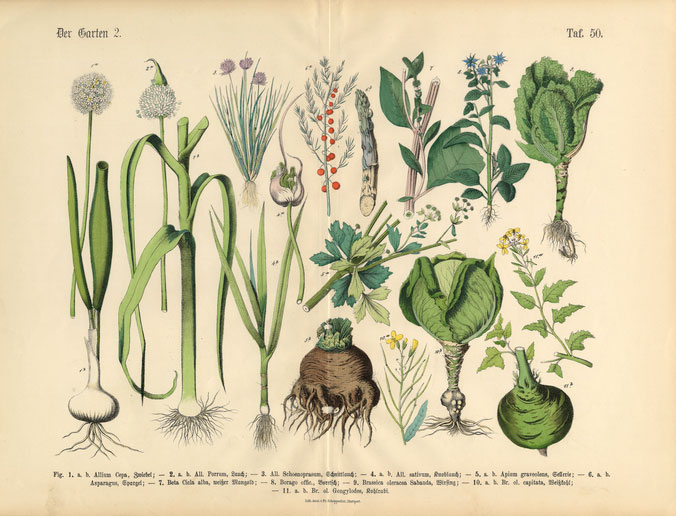

The roots of botany stretch back across all of human history. In our hunter-gatherer days botanists were the ones who knew about the medicinal and cultural-spiritual properties of plants; they were the highly-esteemed doctors of their day. Botanists also played an important role in ushering in the era of agriculture that put us on course to move away from a nomadic lifestyle towards the technological metros we enjoy living in today.
What is Botany?
Botany is the study of land and water plants, fungi, and algae. Historically the study of plants has been the domain of many different fields:
- Agriculturalists
- Priests and priestesses
- Doctors and healers
- Naturalist philosophers
- Pharmacologists
Today’s botanists are people who apply the scientific method to studying plant life. They use many different lines of inquiry including genetic, ecological, pathological, and physiological.
The story of botany is the story of human civilization, development, culture, medicine, and spirituality. Botany has always bridged the gap between two archetypal worlds: the natural environment and human civilization, a gap that’s ever more apparent in our modern urban lives. This is why the liberal arts provides the perfect backdrop for studying botany.
Mysticism, Religion, and the History of Botany is a Quintessential Liberal Arts Story
Today the study of botany is purely scientific. In the past, botanists belonged to a priest-doctor-healer class that was highly reflective of culture, traditions, and a connection with the earth. Some argue that something important has been lost as the philosophy of the scientific method has been applied to botany. Others say this is natural progress, and that the priest-doctor-healer class of their day were also scientists doing the best they could with the knowledge of the time. It’s certainly a debate well-suited for the kind of religious studies course you would find in a liberal arts program.
The plant Hypericum perforatum is a case in point. In the times when humans had a much closer connection with the earth, this flower’s blossoming around the summer solstice made it auspiciously stand out.
Its Greek roots are –hyper meaning “above,” or, “over,” and –eikon meaning “picture,” or, “apparition.” The ancient Romans believed this plant could ward off evil spirits: once a spirit smelled this flower their apparition would disappear back into thin air. In addition to its mystical properties, botanists would cultivate it as a treatment for snake bites and bladder infections.
Hypericum perforatum’s mystical properties evolved as culture changed over time. As the Romans adopted Christianity, it received the name we know it by today.
Botany is Really a Look at the Relationship Between Humanity and Botanical Life
 At that time Christianity was waging a culture war against paganism. Church leaders decided to strategically supplant pagan holidays marking equinoxes and solstices with religious ones like Christmas and Easter. Thus, it came to be that John the Baptist’s important feast day was celebrated near the summer solstice, and Hypericum perforatum became commonly known as Saint-John’s-Wort.
At that time Christianity was waging a culture war against paganism. Church leaders decided to strategically supplant pagan holidays marking equinoxes and solstices with religious ones like Christmas and Easter. Thus, it came to be that John the Baptist’s important feast day was celebrated near the summer solstice, and Hypericum perforatum became commonly known as Saint-John’s-Wort.
Over the centuries it kept its recognized value as a medicinal plant, while its spiritual and religious associations changed with the culture. By the Middle Ages in Europe village mobs were stuffing Saint-John’s-Wort in suspect witches’ mouths to make them confess. Poems like the following were circulated:
“Saint-John’s-Wort doth charm all the witches away. If gathered at midnight on the saint’s holy day. And devils and witches have no power to harm Those that do gather the plant for a charm.”
Botanists from ancient times right up to the present have cultivated Saint-John’s-Wort, though for starkly different reasons. Today the plant is described by botanists in terms of its taxonomy and chemical components:
- Kindom: Plantae
- Order: Malpighiales (order of flowering plants)
- Chemical components: amentoflavone which inhibits enzymes CYP3A4 and CYP2C9, and the vitamin nicotinamide, which is on the World Health Organization’s List of Essential Medicines.
In some ways the botanists of today fulfill the same role as the botanists of the past: they describe Saint-John’s-Wort in terms that are most useful to the way society understands the world. This reflects how civilization, culture, religion, and philosophy have changed over history, a commentary on the state of humanity.
The Modern Study of Botany Lands Squarely in a Liberal Arts and Sciences Curriculum
 Today, Botany is a well-established branch of science. It’s played an important role in the development of the taxonomic system established by Carl Linnaeus and the theory of evolution established by Charles Darwin.
Today, Botany is a well-established branch of science. It’s played an important role in the development of the taxonomic system established by Carl Linnaeus and the theory of evolution established by Charles Darwin.
Botanists study a range of important details about plants, including:
- Plant physiology and structure, including the details of photosynthesis, plant respiration, germination, and plant hormones
- Plant pathology, the study of plant diseases caused by the environment and infectious organisms
- How plants are grown in greenhouses
- Agricultural systems and crop yields
- Phytochemistry, the study of chemicals that are derived from plants, including those with pharmacological properties
- How plants can be used for biofuel, such as corn and ethanol
- How plants can be used as fibers, such as cotton, hemp, and jute
- Ecology, specifically the relationship between plants and their environments
- Conservation, how to protect plants, and how to manage invasive species
Many aspects of botany go right to the heart of a liberal arts education. Philosophically, botany is related to subjects like environmentalism and conservation. Historically botany is responsible for foundational scientific theories that have led to the modern world we know today. Spiritually, botany connects humans with their environment. Culturally, botany illustrates how societies bridge the gap between technology and nature.
Genetic Science is Deeply Entwined with Botanical Science
 Linneaus’ spent his childhood years avoiding school so he could wander the countryside picking flowers. He was thoroughly immersed in botany by the time he began his university studies in 1727. This was long before the field of genetics, and although he developed the taxonomic classification system that’s still used today, he did so based mainly on physical characteristics without knowledge of DNA.
Linneaus’ spent his childhood years avoiding school so he could wander the countryside picking flowers. He was thoroughly immersed in botany by the time he began his university studies in 1727. This was long before the field of genetics, and although he developed the taxonomic classification system that’s still used today, he did so based mainly on physical characteristics without knowledge of DNA.
The modern advent of gene sequencing has completely upended the taxonomies of many plants and even created new genera. What were once educated guesses about a plant’s evolutionary history, though they often proved correct, have now been replaced by facts. With gene sequencing it’s possible to see exactly where on the evolutionary timeline plant species differentiated from their most recent common ancestors.
Whereas in the past, botany was exciting for spiritual, religious, and magical reasons that were closely intertwined with culture, today botany is exciting as a field that’s squarely in the realm of science. With each riddle that is solved, new mysteries are revealed –often with surprising implications– each time a new plant species’ genome is sequenced and mapped.






